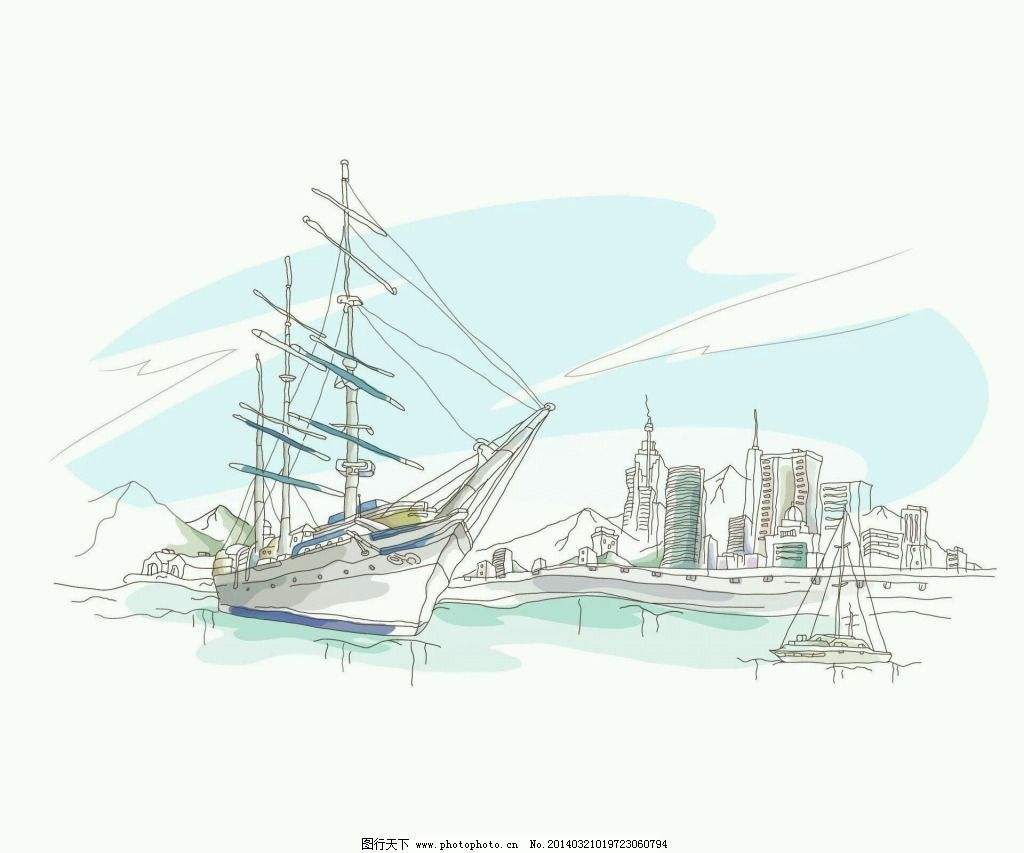
当前课程知识点:3ds Max: A Quick Start from Zero to One > Chapter 4: Texture > 4.4.1 UVW Mapping Method 1:Methods of Locking the Map > 4.4.1
返回《3ds Max: A Quick Start from Zero to One》慕课在线视频课程列表
返回《3ds Max: A Quick Start from Zero to One》慕课在线视频列表
4.4.1
UVW贴图法1
锁住贴图的方法
当我们为模型贴上纹理时
这位淘气的高手
总是会到处乱跑
让你找都找不到
这时候就需要用
UVW坐标进行定位啦
这一讲就
告诉你定位的方法
让你牢牢锁住贴图
呈现出模型丰富的纹理效果
一
UV是什么
在三维世界中
模型和贴图之间
有一个重要的联系员
称为UVW坐标
简称UV
贴图的U和V坐标
对应模型面的X和Y轴
它们用类似贴墙纸的方式
将信息进行传递
二
帮你定位贴图坐标
或许你会问
那如何让贴图坐标
对应到模型坐标呢
在模型上添加UVW贴图
修改器
或者UVW展开修改器
就可以实现效果
UVW贴图修改器是最基础
也是最容易掌握的方法
投射方式较为单一
常用于协助程序贴图
生成UV效果
适合用于结构简单
外观接近几何体的
模型结构
而UVW展开修改器
则更为强大
可以将模型的UV坐标
提取到UV编辑器中
用平面方式进行编辑
虽然与UV贴图相比
过程稍显复杂
但此方法可以帮助我们
直观的查看和编辑UV效果
在用于解决
结构复杂模型时
不会像UVW贴图那样受限制
介于大家还处于起步阶段
我们就先来
了解一下UVW贴图
三
UVW 贴图的类型
UVW贴图修改器
由贴图 通道 对齐
和显示模块构成
它的原理很简单
是通过投影的方式
帮助我们进行
UV坐标的定位
这里
我们用立柜的部分模型
来进行投影原理的讲解
平面投影
平面投影是以平面的方式
投射到模型
好似幻灯机投影
到墙上的效果
通过此方法
可以将砖块贴图
投到墙面
可以将拍摄的油画
放到镜框里
还可以将标志
移到正确的位置
总之
只要是接近平面的模型UV
用此方法就没错了
柱形投影
柱形投影是以包裹的形式
投射到物体
上下各加一个平面投射
把柱子包裹住
就是柱形投影了
可以用于电杆 药品
树枝等结构
接近管状模型的贴图
柱形纹理的制作时
建议使用纹理
能两侧对接的无缝贴图
否则会有一条深深的接缝
效果大打折扣
长方体投影
长方体投影贴图
则是将纹理
从六个面投射到模型
可以快速的为几何体模型
添加贴图
其他投影
知道了原理后
我想下面的类型
就容易理解了
球形投影贴图的原理
类似一张地图包裹到球体
形成地球的效果
而面投影贴图
则是不管模型是什么结构
都以每个面的大小
进行投射
收缩包裹
和XYZ到UVW
一般很少用到
等用到再详细讲解喽
四
二个步骤
实现UV展开
第一步
添加UVW贴图修改器
选择模型
在加入的UVW贴图上
使用长方体贴图类型
此时
再次观察模型贴图
原本凌乱的贴图
已经通过长方体贴图方式
将UV坐标归结整齐了
第二步
调整UV位置和大小
如果你觉得贴图位置
和大小不太理想
可以通过
UVW贴图下的Gizmo
使用变换工具进行调整
如果发现比例不正确
可以使用对齐下的
适配功能
让Gizmo完全包裹模型后
再继续调整
有了UV这位联系员助阵
贴图工作
是不是一下子得先应手了
那么
下一讲
我们就来看看
这位联系员的作用吧
-Fast Understand of 3ds Max,Starting Your Virtual Journey
--Preface
-Preface
-1.1 How to get 3ds Max
--1.1 02
-1.1
-1.2 Introduction to the Interface of 3ds Max
--1.2 01
--3ds Max
-1.2
-1.3.1 Project Preparation 1: Set Up Project Folder
--1.3.1
-1.3.1
-1.3.2 Project Preparation 2:Initialization Settings
--1.3.2
-1.3.2
-1.4.1 Opening and Saving Files
--1.4.1
-1.4.1
-1.4.2 Basics Operation
--1.4.2
-1.4.2
-1.4.3 Advanced Operation
--1.4.3
-1.4.3
-1.5 General Hotkeys
--1.5
-1.5
-1.6 Creating Geometric Primitives
--1.6
-1.6
-2.1 3D Modeling Overview
--2.1
-2.1
-2.2 Three Useful Modeling Methods
--2.2
-2.2
-2.3 Boolean Modeling
--2.3
-2.3
-2.4.1 Spline Modeling 1:Spline Modeling Overview
--2.4.1
-2.4.1
-2.4.2 Spline Modeling 2: Modeling From a Spline
--2.4.2
-2.4.2
-2.4.3 Spline Modeling 3:How to Edit Spline Objects
--2.4.3
-2.4.3
-2.5.1 Polygon Modeling 1:Polygon Modeling Method
--2.5.1
-2.5.1
-2.5.2 Component Selection Techniques
--2.5.2
-2.5.2
-2.5.3 Polygon Modeling 3: 16 Polygon Modeling Commands
--2.5.3
-2.5.3
-2.5.4 Polygon Modeling 4: Subdivision Modeling
--2.5.4
-2.5.4
-2.5.5 Polygon Modeling 5: Attaching and Detaching
--2.5.5
-2.5.5
-2.6.1 Advanced Modeling Skills 1:“Stereoscopic” Modeling Method
--2.6.1 01
-2.6.1
-2.6.2 Advanced Modeling Skills 2:Box Modeling Method
--2.6.2
-2.6.2
-2.6.3 Advanced Modeling Skills 3:Deconstruction Modeling Method
--2.6.3
-2.6.3
-2.6.4 Advanced Modeling Skills 4:Problems to be Considered in Modeling
--2.6.4
-2.6.4
-3.1 Rendering
--3.1 02
-3.1
-3.2.1 Render Your First Work
--3.2.1 02
-3.2.1
-3.2.2 Arnold Render Set Up
--3.2.2 01
-3.2.2
-3.2.3 Introduction to the Arnold Renderer
--3.2.3
-3.2.3
-3.2.4 Arnold Renderer 1: Sampling
--3.2.4 02
-3.2.4
-3.2.5 Arnold Renderer 2: RayDepth and Filtering
--3.2.5 02
-3.2.5
-3.3.1 What is Light?
--3.3.1 02
-3.3.1
-3.3.2 Light and Color
--3.3.2 02
-3.3.2
-3.3.3 Light and Shadow
--3.3.3 02
-3.3.3
-3.3.4 Produces Soft Shadows and Fast Shadow
--3.3.4 02
-3.3.4
-3.3.5 Six Types of Lighting
--3.3.5 01
-3.3.5
-3.4.1 Arnold Light Types
--3.4.1 01
-3.4.1
-3.4.2 Arnold Light Parameters
--3.4.2 01
-3.4.2
-3.4.3 Color Temperatures and White Balance
--3.4.3 01
-3.4.3
-3.5.1 Three-point Lighting Method
--3.5.1
-3.5.1
-3.5.2 Indoor Light Lecture 1: Make a Simple Night
--3.5.2
-3.5.2
-3.6.1 Advanced Skill 1:Rendering Tips
--3.6.1
-3.6.1
-3.6.2 Advanced Skill 2:The Normals and the Smooth Group
--3.6.2
-3.6.2
-4.1 Learn About This Chapter in Four Minutes
--4.1
-4.1
-4.2.1 How to Open the Material Editor?
--4.2.1
-4.2.1
-4.2.2 Using Physical Materials
--4.2.2
-4.2.2
-4.2.3 Three Assistants of the Material
--4.2.3
-4.2.3
-4.2.4 Create a Simple Material
--4.2.4
-4.2.4
-4.3.1 Using maps to Creat Different Looking
--4.3.1
-4.3.1
-4.3.2 Bitmap Node:A Small Node With Virtues
--4.3.2
-4.3.2
-4.4.1 UVW Mapping Method 1:Methods of Locking the Map
--4.4.1
-4.4.1
-4.4.2 UVW Mapping Method 2: UV Overlays
--4.4.2
-4.4.2
-4.4.3 Unwrap UVW 1: Basic of Unwrap UVW Modifier
--4.4.3
-4.4.3
-4.4.4 Unwrap UVW 2: Projection
--4.4.4
-4.4.4
-4.4.5 Unwrap UVW Part 3: Powerful UV Editor
--4.4.5
-4.4.5
-5.1 Animation Overvie
--5.1
-5.1
-5.2.1 3ds Max Animation
--5.2.1
-5.2.1
-5.2.2 Making Animation More Interesting Principle 1: Time and Space
--5.2.2
-5.2.2
-5.2.3 Making Animation More Interesting Principle 2: Slow Motion (slow-mo)
--5.2.3
-5.2.3
-5.2.4 Making Animation More Interesting Principle 3: Squash and Stretch
--5.2.4
-5.2.4
-5.3.1 Animation Technique 1: Parent-Child Relationship
--5.3.1
-5.3.1
-5.3.2 Animation Technique 2:Loop Animation
--5.3.2
-5.3.2
-5.4.1 Techniques of Using the Camera
--5.4.1
-5.4.1
-5.4.2 The Safeframe Cannot Be Ignored in the Camera
--5.4.2
-5.4.2
-5.4.3 Camera Movement
--5.4.3
-5.4.3
-5.4.4 Following Shot
--5.4.4
-5.4.4
-6.1 Rendering a VR Panorama With Arnold
--6.1
-6.1
-6.2 Fast Implementation of VR Interaction
--6.2
-6.2
-6.3 Fast Implementation of AR Interaction
--6.3
-6.3
-6.4 Friends of 3ds Max
--6.4
-6.4
-6.5 Self Learning and Improvement Methods
--6.5
-6.5
-6.6 Methods of Obtaining Resources
--6.6
-6.6
-7.1 PBR Technology Introduction
--7.1
-7.2 Toolbag PBR Real-time Rendering
--7.2
-7.3 Substance Painter PBR Painting
--7.3
-Shortfilm Casestudy 1:The Weapon Used in PUBG (PlayerUnknown's Battlegrounds)
--Microfilm Course 1:The Weapon Used in Eating Chicken
-Shortfilm Casestudy 2:Production experience of Classic of Mountains and Seas
--Microfilm Course 2:Production Process of Shanhaijing
-Examination
